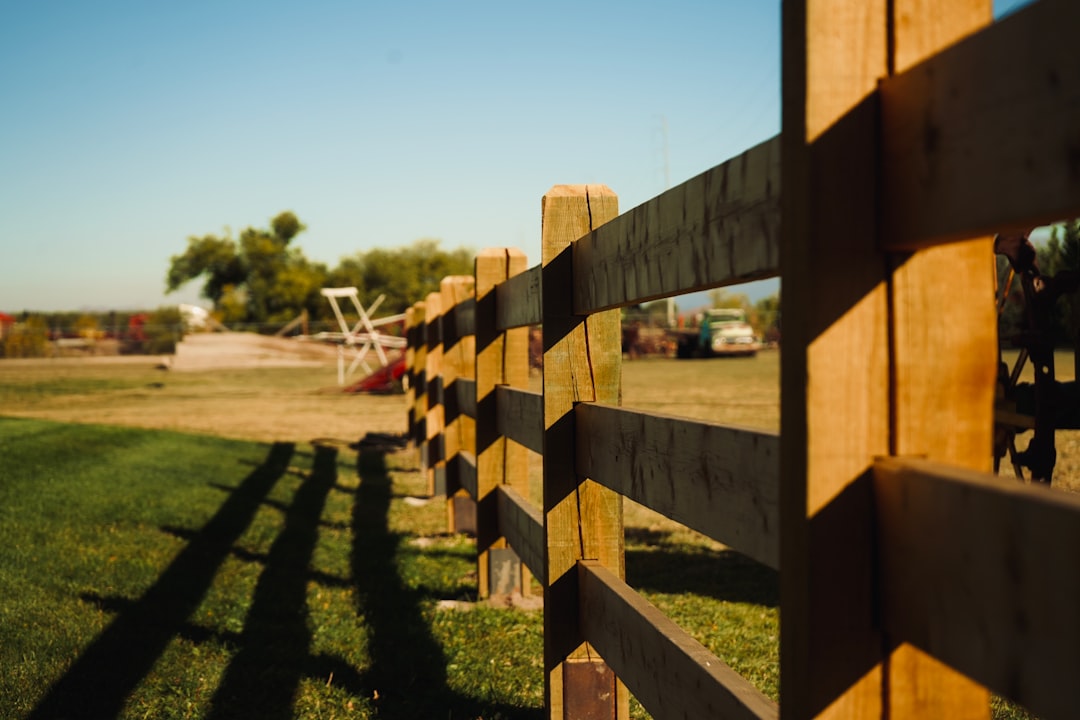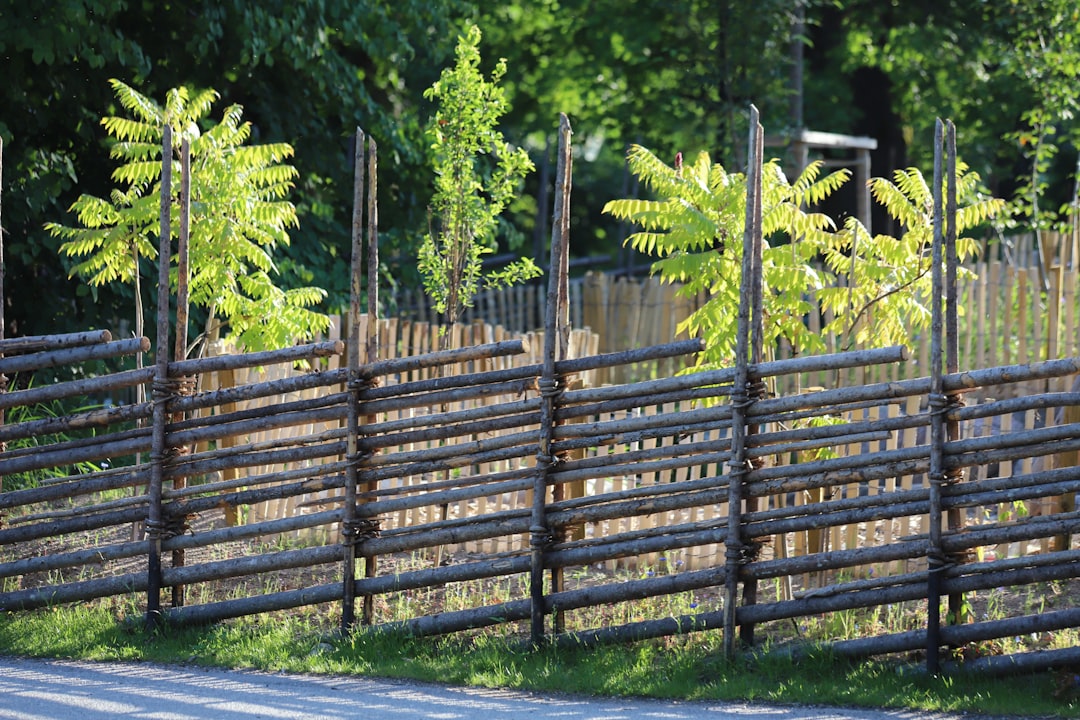

Engage prospects with a scan and streamline customer engagement with FREE QR code marketing tools by Sona – no strings attached!
Create a Free QR CodeFree consultation

No commitment

Engage prospects with a scan and streamline customer engagement with FREE QR code marketing tools by Sona – no strings attached!
Create a Free QR CodeFree consultation

No commitment

QR codes bridge the gap between physical assets on job sites and the digital resources your prospects and clients expect. In fence construction, many high-value prospects walk away untracked because offline engagement is not captured in a CRM or analytics system. A modern QR strategy solves this by converting every yard sign, vehicle decal, sample board, and proposal packet into a trackable touchpoint that drives action. When a curious neighbor scans a code on a project sign or a property manager scans a proposal, you can immediately route them to the right experience and capture intent in real time.
The path to a data-driven customer journey in fence construction companies is clear. You identify offline touchpoints where engagement already occurs, match each touchpoint with a focused action, and measure the outcomes. Done right, QR programs reduce missed leads, shorten response times, and surface buyer signals that previously stayed anonymous. The payoff is faster estimates, more accurate attribution, and stronger revenue predictability.
Advanced QR management solutions like Sona QR make it simple to generate, track, and segment codes for every scenario. With centralized management, you can retire guesswork, defend against lost opportunities, and optimize project communications from initial inquiry through final walkthrough. Start creating QR codes for free at Sona.com.
Purpose-built platforms allow fence contractors to scale these digital flows while capturing more value at every touchpoint. Over time, your business will convert more anonymous interest into known pipeline and deliver the transparency that modern buyers expect.

Fence construction companies face a set of persistent challenges that QR codes address directly. Many prospects interact with print assets like yard signs, vehicles, or mailers, then leave no digital trail. Without a frictionless way to respond, high-intent inquiries often slip by untracked, and follow-up happens too slowly. At the same time, teams struggle to connect specific touchpoints to revenue, which complicates resource allocation and undermines confidence in marketing spend.
QR codes solve these issues by turning every physical interaction into a measurable, actionable moment. A neighbor walking a dog past a project sign can scan for an instant estimate. A facilities manager reviewing a proposal can confirm certifications and schedule a site visit. The result is speed, clarity, and attribution across a journey that used to be fragmented and opaque.
Collectively, these benefits help fence contractors engage prospects in real time, prioritize follow-up based on intent signals, and deliver a connected experience that builds trust. The net effect is fewer missed opportunities, stronger attribution, and more confident growth planning.

Fence contractors can deploy several QR formats to meet a wide range of field and marketing needs. The right choice depends on the action you want and the environment where scanning occurs. Because prospects vary from homeowners researching options to property managers requesting bids, it pays to match format to context.
Dynamic QR codes are especially valuable in this industry. They allow you to update destinations without changing printed assets, run A/B tests on landing pages, and segment by placement. Static codes have a place for evergreen resources like a portfolio, but most growth scenarios benefit from dynamic flexibility and analytics.
When in doubt, prioritize formats that deliver immediate utility to the person scanning. For fence projects, that often means forms for quotes and service, web links for research, and PDFs for documentation. Sona QR supports all of these formats and centralizes management so you can segment, measure, and update at scale.

Growth slips through the cracks when companies cannot surface or respond to engagement signals at each touchpoint. QR codes, placed where attention already exists, turn every brand encounter into a potential lead, a learning moment, or a service request. The key is to meet prospects where they are and give them a reason to scan, aligning with fence company marketing best practices.
Visibility and relevance drive scans. Place codes at eye level, pair them with benefit-focused calls to action, and keep the destination mobile first. Over time, you will see which placements deliver consistent results so you can double down on what works.
With every scan traceable, fence construction companies gain line-of-sight into which placements yield the highest engagement and ROI. That clarity helps focus resources where they deliver the most results.

Fence buyers and property managers follow different paths to purchase. QR codes let you tailor the experience to each context while capturing the intent behind every interaction. By aligning use cases with buyer needs, you drive action and create a clean attribution trail.
Companies that deploy three to five high-impact QR use cases typically see measurable lifts in quote volume, follow-up speed, and close rates. Start with the scenarios that remove friction from your most common offline encounters.
These use cases convert static moments into measurable interactions. They also create a feedback loop that reveals what content buyers need most, so you can keep refining your approach.
Each QR code scan is a signal that contains context and intent. If you deploy multiple codes across touchpoints and connect them to your CRM, you can segment audiences automatically and deliver follow-up and intent-driven retargeting that matches the buyer’s stage. This shifts your marketing from generic outreach to behavior-based journeys that close faster.
Fence contractors can distinguish homeowners exploring materials from commercial clients requesting bids or past customers seeking repairs. That segmentation informs content, cadence, and channel selection for retargeting. It also tells your sales team exactly what triggered interest.
With Sona QR, you can generate unique codes for each journey stage, tag them automatically, and sync scans into your systems. Every scanned moment becomes a data point you can use to build high-value audiences and protect leads from competitor poaching.
QR codes are not a standalone tactic. They function as connectors that unify your offline and digital campaigns, enabling real-time engagement and richer data across every channel. For fence construction companies that rely on print, in-person events, and field operations, this unified flow is essential to attribution and consistency.
The goal is a connected funnel. A prospect sees your project sign, scans to view a gallery, returns via a retargeting ad, and books a site visit on your landing page. Each step is tracked, and your team understands where to invest more and where to optimize.
Centralized code management ensures every scan feeds analytics and CRM workflows. With Sona QR, you can manage codes across channels, monitor performance in one dashboard, and sync scan data to your pipeline for full-funnel visibility.
A disciplined rollout turns QR from a clever add-on into a revenue driver. The following checklist helps fence construction teams plan, launch, and optimize campaigns with confidence. Begin by aligning QR use cases to business goals, then design for field conditions and measure outcomes against benchmarks.
Treat this as a living playbook. As scan data accumulates, you will see which placements, messages, and destinations outperform. Use those insights to refine creative, shift spend, and expand to new surfaces.
Clarify the outcome you want before you print or publish anything. Common goals include maximizing inbound quote requests in target neighborhoods, promoting new materials like aluminum or composite, and capturing post-install service needs. Defining the objective will inform code placement, CTA language, and destination design.
Tie the goal to a measurable target such as a 25 percent increase in scan-to-lead conversion from yard signs or a 30 percent reduction in time from proposal delivery to scheduled site visit. Set a timeframe and assign ownership for review.
Choose between static and dynamic codes. Static codes are fine for evergreen destinations like your portfolio. Dynamic codes are best for campaign pages, trackable forms, financing offers, and any scenario where you want analytics or may update content later.
If you need data, retargeting, or flexibility, use dynamic codes. Sona QR supports dynamic destinations, versioning, and segmentation so you can pivot without reprinting.
Design for real-world conditions. Codes on trucks and yard signs need higher contrast, adequate size, and clear white space. Pair each code with a benefit-driven CTA such as Scan for instant estimate or Scan to compare vinyl vs wood. Include your logo for brand recognition, but do not crowd the code.
Test scanning from different distances, angles, and lighting conditions. Field-test final proofs on-site to confirm scannability when surfaces get dusty or wet. Build a short, mobile-first landing experience that loads quickly on cellular networks.
Put codes where attention is highest and intent is strongest. For fence construction companies, start with project signage, fleet vehicles, proposals, showroom displays, and post-install stickers. Match each placement with a destination that fits the context, such as a materials guide in the showroom or a warranty registration on the installed fence.
Roll out in waves to compare performance by placement and creative. Use unique codes per asset so you can attribute results to specific surfaces, routes, or neighborhoods.
Review scan analytics weekly at launch, then monthly once performance stabilizes. Track scan volume, scan-to-lead rate, time to first response, and close rates by source. Use UTM parameters to attribute traffic in your analytics platform and run A/B tests on landing page headlines and forms.
Feed insights back into design and placement. Retire underperforming creative, iterate on CTAs, and scale the placements that consistently convert. Platforms like Sona QR automate code management, tracking, and CRM integration so you can focus on outcomes rather than manual process.
Fence construction marketing has long struggled to connect offline engagement to signed contracts. QR-driven analytics close that loop by capturing who scanned, where they scanned, and what happened next through offline attribution. With clear data, you can finally see which placements and messages contribute to pipeline and revenue, then budget accordingly.
Analytics are only as valuable as the actions they inform. Establish a cadence for reviewing performance, and connect scan data to pipeline stages in your CRM. As patterns emerge, refine your creative and invest where return is strongest.
With Sona QR and Sona.com, you can track every scan, sync it to your CRM, and attribute revenue using multi-touch models. Sona’s identity resolution and Buyer Journeys connect QR scans with website visits, ad clicks, and email engagement to produce a complete picture from first scan to signed contract.
Strong performance hinges on a few simple practices that many teams overlook. First, make each code unique to its placement so you can see exactly which truck, sign, or brochure pulls its weight. Second, automate follow-up so your company responds faster than competitors and keeps momentum going while interest is high.
Finally, educate both your team and your customers. Installers should point out QR resources during walkthroughs. Sales must reference QR-enabled comparisons during consultations. When people understand the value behind the scan, participation rises and outcomes improve.
For creative deployment, consider QR codes on HOA compliance packets that link to prefilled approval forms or QR codes on invoices that route to financing options. Sona QR connects these scans to your CRM so every engagement can trigger a workflow or nurture sequence in real time.
Many fence contractors already use QR codes to reduce friction, increase scan-to-lead conversion, and illuminate what truly drives demand. These examples demonstrate how small shifts at key touchpoints create outsized impact. Use them as a starting point and adapt them to your local market and service mix.
The common thread across these wins is intent capture. By turning offline curiosity into digital action in the moment, companies convert more nearby interest and move prospects forward faster.
Industry innovators go further by using QR to spark referrals, gather user-generated content, and run satisfaction surveys. Each scan becomes an opportunity to learn and to fuel your marketing with authentic social proof.
QR codes have transformed fence construction companies from traditional service providers into tech-savvy industry leaders by enabling seamless access management and enhanced client communication. Whether it’s streamlining site access, improving project transparency, or boosting customer satisfaction, QR codes replace cumbersome manual processes with instant, mobile-friendly solutions that deliver real-time data and actionable insights.
Imagine effortlessly controlling who enters your construction sites, sharing up-to-date project information with clients, and tracking every interaction to optimize operations and secure more contracts. With Sona QR, you can create dynamic, trackable QR codes in seconds, update access permissions instantly without reprinting, and connect every scan directly to measurable business outcomes. No missed access, no lost leads—just smarter, more efficient fence construction management.
Start for free with Sona QR today and turn every scan into secure access, satisfied clients, and new business opportunities.
QR codes help fence construction companies capture offline engagement, reduce missed leads, speed up follow-up, provide dynamic content updates, track marketing effectiveness, and improve revenue attribution.
They can place QR codes on yard signs, vehicles, proposals, and door hangers that link to instant estimate forms, material comparisons, and appointment scheduling to convert passerby interest into measurable leads.
Useful QR code formats include dynamic web links, forms for quotes and bookings, vCards for contact saving, PDF downloads for catalogs and warranties, SMS or email prefills for quick communication, and app downloads for client portals.
They track scan volume by location and asset, scan-to-lead rates, follow-up timing, close rates, device types, and revenue attribution by integrating scan data into CRM systems and analytics platforms.
Effective placements include yard signs, project signage, company vehicles, printed proposals, showroom displays, post-install stickers, trade show booths, direct mail, and local advertising materials.
They should select static QR codes for evergreen content like portfolios and dynamic QR codes for campaigns needing analytics, content updates, or retargeting capabilities.
They should clarify campaign objectives, choose the QR code type, design and test codes for field conditions, deploy codes on high-impact surfaces, and continuously track, measure, and optimize performance.
QR codes provide instant access to quotes, material comparisons, warranty registrations, care guides, and service requests, which speeds decision-making and enhances post-installation support.
Yes, QR codes allow companies to attribute leads and revenue to specific offline touchpoints, neighborhoods, and campaigns, enabling data-driven marketing spend and better ROI.
They create journey-specific QR codes tagged by placement and context, sync scan data to CRMs and ad platforms, segment audiences by buyer stage and location, and deliver personalized follow-up and retargeting.
Use Sona QR's trackable codes to improve customer acquisition and engagement today.
Create Your FREE Trackable QR Code in SecondsJoin results-focused teams combining Sona Platform automation with advanced Google Ads strategies to scale lead generation

Connect your existing CRM

Free Account Enrichment

No setup fees
No commitment required

Free consultation

Get a custom Google Ads roadmap for your business






Launch campaigns that generate qualified leads in 30 days or less.
